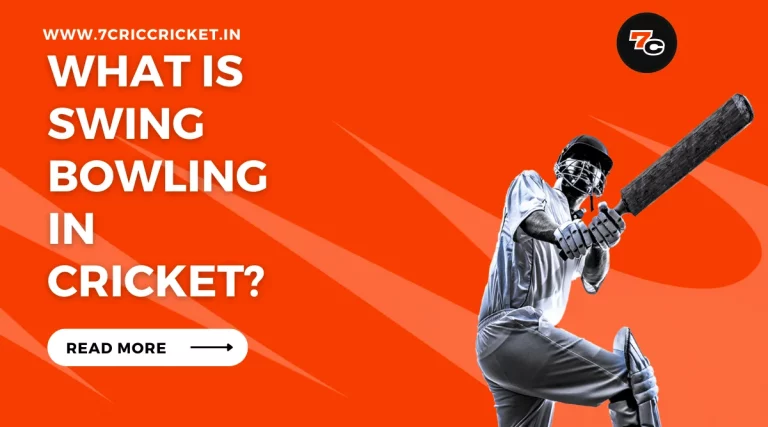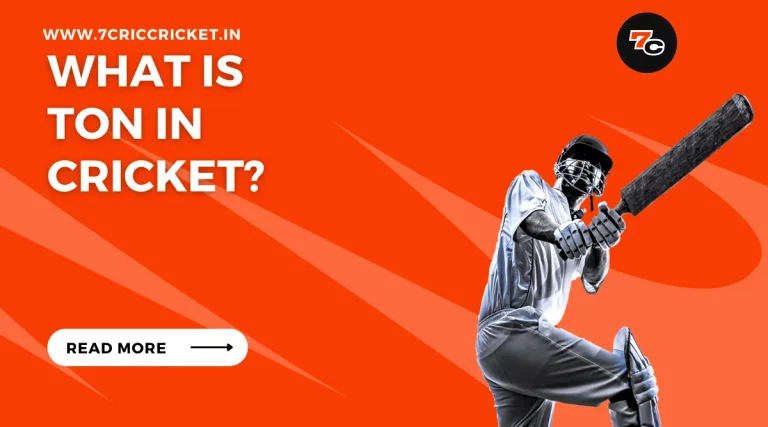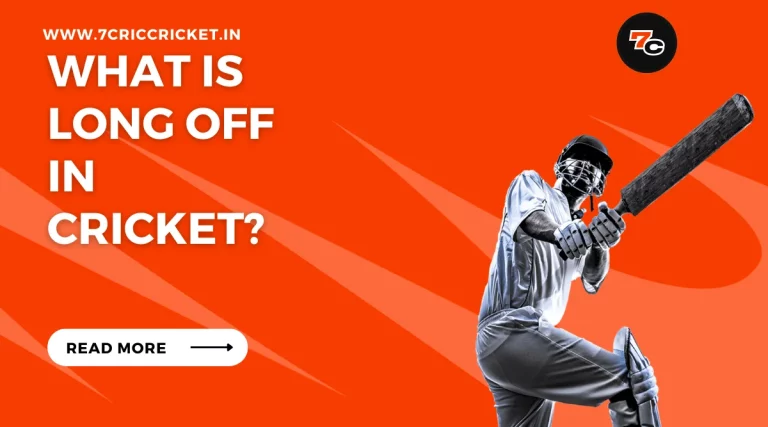What Is Top Edge in Cricket?
Cricket, a sport celebrated for its strategic gameplay and technical nuances, introduces players to a variety of shot techniques.
One such technique, the top edge, has garnered considerable attention due to its impact on the outcome of a shot.
Up to 75% Reload Bonus on Aviator
Up to 75% Reload Bonus on Aviator
- Easy Sign-Up and Deposits
- Win 1000x Bet Amount!
- Available in four different Indian languages
In this article, we explore the definition of top edge, its occurrence, and the subsequent fielding reactions. Additionally, we provide valuable tips to avoid falling victim to this often-dreaded aspect of the game.
Definition of Top Edge
The definition of top edge in cricket refers to the contact made between the bat and the ball that results in the ball being hit towards the top portion of the bat, often leading to unpredictable flight and potential dismissal.
The top edge is one of the common mistakes that batsmen make, and it can happen due to a variety of causes.
One of the main causes of top edge is mistiming the shot. When a batsman mistimes the shot, the contact between the bat and the ball is not clean, leading to the ball hitting the top part of the bat rather than the middle.
This can often happen when the batsman is trying to play an attacking shot but fails to judge the timing correctly.
Another common mistake that can result in a top edge is poor footwork. When a batsman fails to move their feet properly, they are more likely to misjudge the line and length of the delivery.
This can lead to the bat coming down at an awkward angle, resulting in a top edge. Understanding the causes of top edge is crucial in order to avoid making these mistakes.
In the next section, we will explore how the top edge happens and discuss some techniques to minimize its occurrence.
Summary & Key Takeaways
ShowHow Does the Top Edge Happen
To understand how the top edge occurs in cricket, it is important to analyze the mechanics of the bat-ball contact.
The top edge happens when the ball makes contact with the upper part of the bat, resulting in the ball flying high in the air. This can lead to catches being taken by fielders, resulting in the dismissal of the batsman.
The causes of top edge can vary, but there are some common mistakes that often lead to this outcome. Here are four key factors that contribute to the occurrence of top edge:
Poor timing
When the batsman mistimes the shot, the ball may hit the upper part of the bat instead of the sweet spot, resulting in a top edge.
Lack of control
If the batsman fails to control the shot properly, the bat face may open up, causing the ball to hit the top edge.
Misjudgment of bounce
When a batsman misjudges the bounce of the ball, they may end up hitting it with the upper part of the bat, resulting in a top edge.
Playing across the line
If the batsman plays across the line of the ball, they are more likely to hit the ball with the top edge.
Understanding these causes and common mistakes can help batsmen rectify their technique and minimize the occurrence of top edges in their shots.
Impact of Top Edge on the Shot
The top edge significantly affects the trajectory and outcome of the shot in cricket.
When a batsman mistimes a shot and makes contact with the top half of the bat, the ball tends to go high up in the air instead of traveling along the ground or to the boundary.
This can create opportunities for fielding techniques such as catching or run-outs. Fielders need to be alert and well-positioned to take advantage of these chances.
The impact of the top edge also influences batting strategies. Batsmen need to be aware of their shot selection and execution to minimize the chances of getting caught out due to a top edge.
They must consider the field placements, the bowling line and length, and the condition of the pitch. By adjusting their technique and timing, batsmen can reduce the possibility of top-edging the ball.
On the other hand, fielding teams can employ specific tactics to induce top edges.
They can set fields that encourage the batsmen to play risky shots, such as placing fielders in catching positions or in positions where they can quickly run towards the ball if it goes high in the air.
Understanding the impact of the top edge on the shot is crucial for both batsmen and fielding teams.
It provides insights into effective batting strategies and fielding techniques, ultimately contributing to the overall performance and success of the team.
Fielding Reactions to Top Edge
Fielders must react quickly and position themselves strategically to capitalize on the opportunities created by a top edge in cricket.
Fielding strategies and techniques play a crucial role in maximizing the chances of a successful catch or dismissal. Here are four key fielding reactions to a top edge:
Anticipate
Fielders need to read the batsman’s shot and anticipate the direction and height of the top edge. This allows them to quickly move to the best possible position to take the catch.
Communication
Effective communication between fielders is vital. They must call out loudly and clearly to avoid collisions and ensure that the fielder in the best position takes the catch.
Judgement
Fielders must judge the trajectory and speed of the ball accurately. This will help them position themselves correctly and time their jump or dive to perfection.
Agility
Fielders need to be agile and quick on their feet. They should be able to react swiftly to a top edge and adjust their position accordingly.
Tips to Avoid Getting Caught on the Top Edge
Avoiding getting caught on the top edge requires proper positioning and anticipation. When playing cricket, it is important to be aware of the common mistakes that can lead to getting caught on the top edge.
One of the most common mistakes is playing the ball too early, resulting in mistiming and a potential catch.
To avoid this, it is essential to focus on the timing and make sure to connect with the ball at the right moment.
Another mistake is not getting into the right position before playing the shot. This can lead to an improper bat angle, causing the ball to go upwards towards the fielder.
To improve batting skills and minimize the chances of getting caught on the top edge, it is crucial to practice proper footwork and body positioning.
This will allow the batsman to be in a better position to play the shot and reduce the risk of mistiming.
Additionally, practicing different shots and variations will help develop a better understanding of the game and increase the chances of playing the ball correctly.
By focusing on these techniques and avoiding common mistakes, batsmen can significantly reduce the chances of getting caught on the top edge.
Wrapping Up: The Significance of the Top Edge
In conclusion, the top edge in cricket refers to when the ball hits the upper portion of the bat and goes upwards.
It is a common occurrence in the sport and can have various impacts on the shot and fielding reactions.
200% Spribe Aviator Welcome Bonus
200% Spribe Aviator Welcome Bonus
- Easy Sign-Up and Deposits
- Win 1000x Bet Amount!
- 450% Bonus up to ₹1,000,000
To avoid getting caught on the top edge, players should focus on their technique and timing while playing shots.
Understanding the mechanics of the top edge can help players improve their batting skills and minimize the risk of getting caught out.
Anything You Need to Know about Top Edge
What Are the Different Types of Top Edges in Cricket?
Different techniques and batting styles can result in various types of top edges in cricket. Understanding the mechanics of these edges and practicing proper shot selections can help batsmen avoid them and enhance their overall performance.
Can a Top Edge Result in a Dismissal?
Yes, a top edge in cricket can result in a dismissal. It occurs when the ball strikes the upper portion of the bat and goes straight up in the air, allowing fielders to catch it. Batsmen can avoid top edges by using proper technique and timing.
How Can a Batsman Use the Top Edge to Their Advantage?
Using the top edge as a scoring opportunity requires skill and precision. Batsmen can manipulate the angle and timing of their shots to intentionally guide the ball over the fielders, turning a potential dismissal into valuable runs.
Are There Any Specific Fielding Positions That Are Strategically Placed to Catch Top Edges?
Strategic fielding positions in cricket are strategically placed to catch top edges, which can provide advantages to the fielding team. These positions take advantage of the unpredictable trajectory of the ball and increase the chances of a successful catch.
What Are Some Common Mistakes That Lead to Getting Caught on the Top Edge?
Common causes of top edge in cricket include mistiming the shot, playing with a hard hand, and lack of footwork. To avoid getting caught on the top edge, batsmen should focus on technique, timing, and playing with soft hands.








